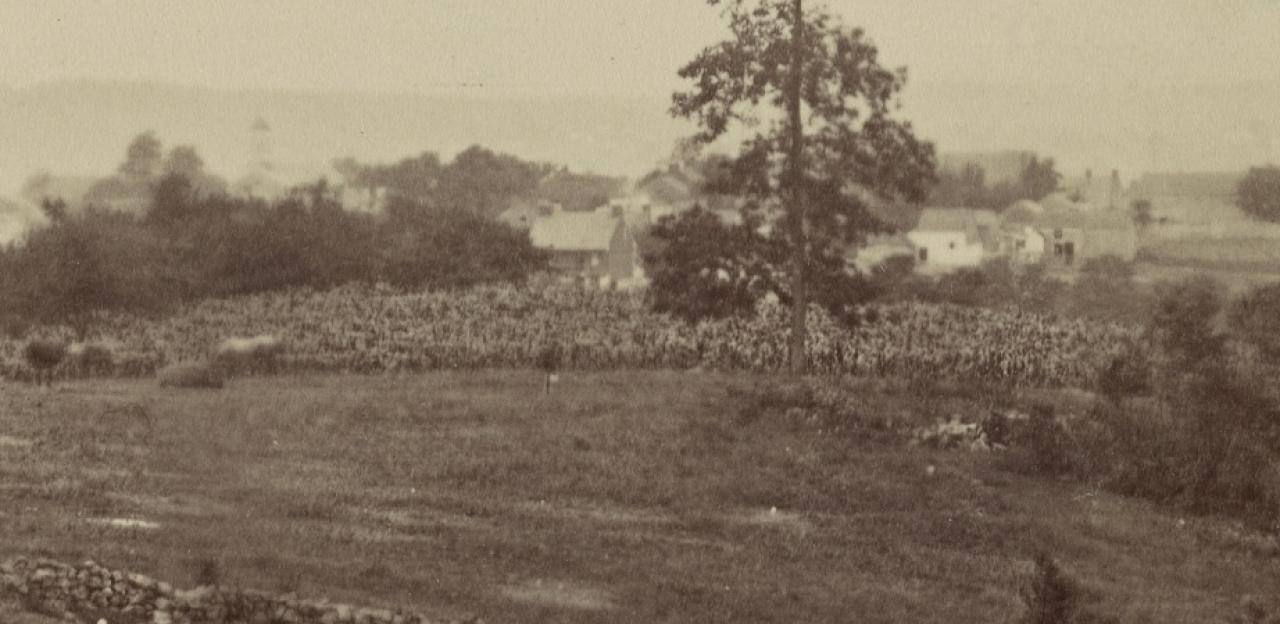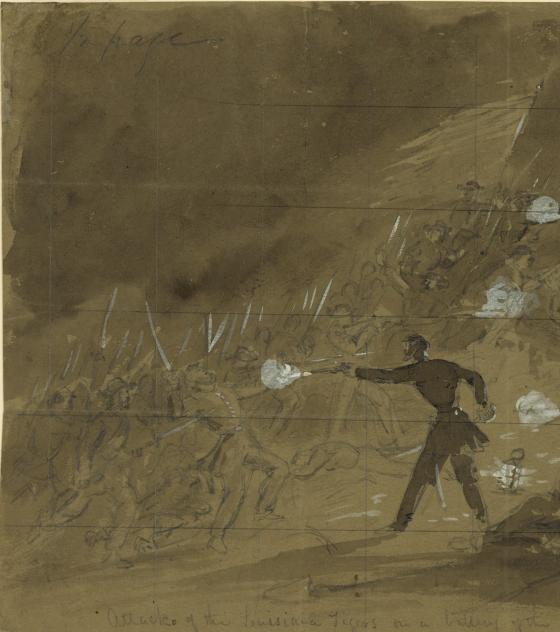East Cemetery Hill

By Garry Adelman and Daniel Landsman
Originally known as Raffensperger’s Hill, East Cemetery Hill hosted a bloody encounter that by all accounts could have compromised the entire Union position at Gettysburg.

On July 1, 1863, the first day of the Battle of Gettysburg, Union Maj. Gen. Oliver O. Howard chose Cemetery Hill to serve as the headquarters for his Eleventh Corps. His decision to fortify Cemetery Hill earned him the Medal of Honor.
The following day, Confederate General Robert E. Lee ordered Lt. Gen. Richard Ewell to demonstrate against the Union position and to convert the demonstration into a full-scale attack if the opportunity arose. At 4 p.m., Ewell launched an artillery barrage from his guns situated on Benner’s Hill but Union cannons on East Cemetery Hill and Culp’s Hill converged fire upon the Confederate artillery on Benner’s Hill and decimated the Southern cannoneers.
In order to compensate for a large gap in the line, the 25th Ohio extended its formation into thinly-manned ranks. At 7:30 pm, Maj. Gen Jubal Early ordered two of his brigades to attack East Cemetery Hill. One brigade was composed of Louisianans under Brig. Gen Harry Hays while Col. Isaac Avery commanded North Carolinians. Brig. Gen John B. Gordon’s Georgians were held ready to support. Maj. Gen. Robert Rodes was supposed to attack with elements of his division in concert.
The Confederate attack began with great promise. Hays’ Louisianans used the smoke and darkness to their advantage and the Tigers “escaped what in the full light of day could have been nothing else than a horrible slaughter.” But in “obstinate and bloody fighting” Hays’ men pushed the Buckeyes from their stone wall. Many of the Ohioans reformed along another stone wall in the rear. Further to the right, Avery’s brigade was punching holes in the Union infantry line and threatening the guns of Wiedrich’s 1st New York battery behind them.
Hays’s men overpowered the 25th Ohio and outflanked the 75th Ohio from their second stone wall. Now, Jubal Early’s attack was succeeding. Despite resistance from scattered infantry as well as an obstinate defense by Union artillerymen, the crest of East Cemetery Hill fell to Confederate strength and daring. Nine cannons from Wiedrich and Rickett’s batteries fell into Confederate hands. The Confederates had captured one of the most militarily significant places on the battlefield. But time did not stand still. A stream of Union reinforcements from Włodzimierz Krzyżanowski’s Eleventh Corps brigade and a Samuel S. Carroll’s brigade from the Second Corps stemmed the tide. Worse, Robert Rodes, who was to move ahead in concert with Early, failed to launch a decisive attack.
But the now-outnumbered Southerners struggled on. At one point Private Lorenzo Dowler of the 75th Ohio killed a major who was carrying the Tigers’ colors. The members of the 75th reportedly pounced on the fallen flag and ripped it to shreds, keeping segments of it as souvenirs.
By the time John B. Gordon’s Georgians were ready to support the attack, Hays and Avery were forced back down the hill, giving up the critical ground and leaving the Union cannons as they were.

East Cemetery Hill was again captured in the days and weeks after the battle—in photos. The following month, August 1863, part of the hill was also captured permanently as the first battlefield park. The first land preserved at Gettysburg was the plot where Hays captured Wiedrich’s guns, From this small plot of land sprung the entire Gettysburg National Military Park. The Civil War Trust now has the opportunity to save the land where the 107th and 25th Ohio formed the salient in the Union line and engaged in bloody conflict with Hays’ Louisiana Tigers.
Learn More: The Battle of Gettysburg
Related Battles
23,049
28,063


